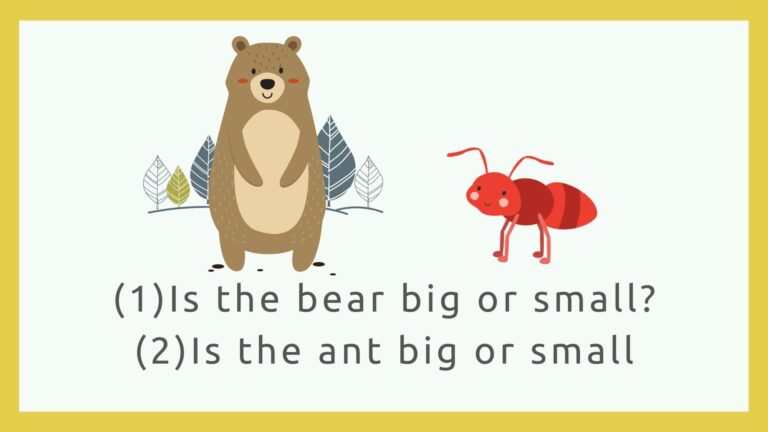“Drink Responsibly” Messages
Alcohol producers frequently include messages encouraging people to “drink responsibly” in their advertisements. On the surface, these campaigns appear to reflect companies’ sincere efforts to reduce excessive drinking and other negative behaviors associated with alcohol consumption. Some experts, however, are critical of the ads, pointing out that the messages are frequently written in small letters whose colors blend in with the background. ( 26 ), the messages are often contradicted by the images in the ads. One vodka advertisement in the United States, for example, was accompanied by a responsibility message, but the advertisement itself featured a character who appeared to have been enjoying vodka all night.
Another criticism is that the messages are ( 27 ). Researchers at the Johns Hopkins Bloomberg School of Public Health, in the United States, analyzed dozens of alcohol advertisements from major magazines and found that 87 percent of the ads contained advice to drink responsibly. None, however, defined what this meant or provided health warnings supported by scientific evidence. In fact, critics say that the messages are simply another way to improve the reputation of the alcohol companies.
Some people also complain that alcohol producers use the ads as a way to ( 28 ). Whenever there are proposals to increase alcohol taxes or place limitations on where alcohol can be sold or advertised, alcohol manufacturers argue that such measures are not necessary because they already provide responsibility messages in their advertising. No research, however, has indicated that the responsible drinking messages have any effect whatsoever.
Dog Colors
A recent study of Labrador retrievers has revealed that chocolate-colored Labradors are more likely than Labradors of other colors to suffer from ear infections and skin diseases. It also found their average life expectancy is about 10 percent shorter. According to the research team, ( 29 ). Ear infections and skin diseases both cause inflammation a condition where the body tries to repair cellular damage, and which is characterized by swelling, increased temperature, and pain. Inflammation is harmful in the long term, and studies in humans have shown that people with inflammation tend to die younger than others.
The researchers believe color-related health problems in Labradors result from breeding by humans. Both parents must have the gene for the chocolate color in order to produce a chocolate Labrador, so there are fewer dogs available for breeding, and this limited population of dogs likely has more genes that are associated with ear infections and skin problems. ( 30 ), a gene found in dogs with blue eyes and a white coat can increase rates of deafness, while another gene, which gives dogs a pale, spotted coat, has been linked with high rates of blindness and deafness.
Other studies have found that a dog’s color ( 31 ). In a study of English cocker spaniels at the Autonomous University of Barcelona, researchers discovered a relationship between melanin a substance that affects a dog’s coloring and other chemicals that affect the dog’s brain. The study found that, among English cocker spaniels, which are known to be an aggressive breed to begin with, golden-colored ones are even more aggressive than others.
Dracula Tourism
The Transylvania region of Romania is generally associated with Dracula, the mythical vampire from Bram Stoker’s famous 1897 horror novel. Although Stoker never visited the region, his descriptions of Transylvania’s ancient forests and mysterious castles, along with the popularity of the Dracula character, established Transylvania as a destination for Dracula fans. In the 1960s, they began visiting the region in hope of experiencing the culture that had given rise to the legend. They were generally disappointed, however, as most residents of the region were unfamiliar with Stoker’s novel or vampire tales. Even so, the number of tourists kept rising.
Interest in Dracula tourism later increased as a result of Raymond T. McNally and Radu Florescu’s 1972 book, In Search of Dracula, which made a strong connection between Dracula and Vlad III, a fifteenth century ruler known for his cruel and severe lawenforcement tactics. This went against official history, which promoted Romania’s identity as an independent Communist country by presenting Vlad III as a powerful leader who successfully defended his land against outside threats. The Dracula legend also made Transylvania seem backward, superstitious, and frightening, and this contradicted the modern, industrialized image the country hoped to convey. Therefore, in the early 1970s, Romanian officials decided against encouraging Dracula tourism in spite of its potential economic benefits.
Fans continued to visit the region, however, and private businesses quietly began offering services designed to appeal to their interests. What is more, the collapse of Communism in 1989 weakened official opposition to Dracula tourism. More recently, Romania’s Ministry of Tourism decided Dracula’s value as a means of improving the economy through tourism was too great to ignore. The national tourism website now features information about Dracularelated sites and activities. However, it is strongly biased toward historical fact, emphasizing sightseeing attractions in the region that have a connection to actual events.
Lightning Strikes and Ships
Clouds often form around particles called aerosols. These tiny particles attract water vapor, causing water droplets to form. When there are fewer aerosols present, water vapor molecules in the air have fewer particles to form around, so each individual water droplet tends to be larger and heavier. Such large droplets create low clouds that release warm rain. When aerosols are present in greater numbers, however, the water droplets are smaller, and there are more of them. And because these droplets are lighter, they can be lifted high enough in the atmosphere that they turn to ice. When this happens, they make contact with other frozen droplets and generate electricity, which is released as lightning. In a thunderstorm, each flash of lightning contributes to producing a harmful greenhouse gas. This fact, along with the harm done to human life and property by lightning strikes, has been motivating scientists to examine the effect of human activities on storm intensity and lightning frequency.
In recent years, a number of data-gathering networks have been established which detect lightning strikes and determine their frequency and location. In reviewing data from one such network, which uses a global system of low-frequency radio receivers to gather lightning data, atmospheric scientist Katrina Virts noticed an almost straight line of strikes occurring across the Indian Ocean between Sri Lanka and the Indonesian island of Sumatra. This line matched the path of one of the world’s busiest shipping routes. Virts and her colleagues then analyzed the locations of 1.5 billion lightning strikes from 2005 to 2016. They found that powerful storms with frequent lightning strikes were almost twice as likely to occur in two of the busiest shipping routes across the northern Indian Ocean and the South China Sea.
When they examined patterns of ships’ engine emissions from a global database, Virts and her colleagues found that aerosols in the atmosphere above the two shipping routes were more numerous than those above nearby waters with less shipping activity. Engine emissions contain tiny carbon particles and compounds of nitrogen and sulfur that act as aerosols. When out in the open ocean and therefore not subject to nations’ emissions regulations most ships continuously burn a cheap, dirty type of fuel, which releases large amounts of these particles into the air. This results in the formation of numerous storm clouds. The researchers say their findings are evidence that man-made causes are increasing the frequency of lightning and the intensity of storms on an ongoing basis.
Is It Time for Universal Basic Income?
In 1516, Sir Thomas More wrote Utopia, a novel about the political and social systems of an imaginary ideal nation. More addressed the issue of poverty by having one of the main characters exclaim, “No penalty on earth will stop people from stealing, if it’s their only way of getting food…. It would be far more to the point to provide everyone with some means of livelihood.” Over 500 years later, income inequality and economic insecurity are still major problems, having become deep-rooted consequences of modern capitalism. This situation has inspired some economists and political strategists to look to More’s Utopia for guidance.
Universal basic income (UBI), the idea of providing everyone in society with a minimum income that would cover basic needs, regardless of employment status or living circumstances, is being tested around the world. Supporters argue this approach could eliminate poverty in society. UBI would provide money for things like food, shelter, and clothing, and, in the process, reduce stress on economies by increasing individuals’ buying power. Malnutrition and homelessness two of the worst and most widespread effects of poverty would also drop. Research has shown well-nourished children perform better in school and have fewer behavioral problems, and students are better able to make consistent academic progress when they have stable living circumstances. Supporters also note that adults who do not need to work multiple jobs to make ends meet can focus on such things as starting their own business or learning new skills to increase employment opportunities.
Critics of UBI argue that recipients would quit their job because there would be less incentive to work, and that they would spend their “free money” not on basic necessities but on vices such as drinking and gambling. Other criticisms of UBI are that it would encourage employers to decrease wages, that it would take government money away from essential social programs, including food assistance, and that the cost would simply be too high for governments to manage. Indeed, experts estimate countries could need to spend up to 35 percent of their gross domestic product to cover UBI for all their citizens. However, supporters insist that, because UBI would decrease the need for other social programs, government spending on healthcare, food assistance, and unemployment would fall.
Countries and cities around the world are experimenting with various small-scale versions of UBI. In a 12 year UBI trial in Kenya, all adults in some rural communities began receiving $22 every month from an aid organization. Initial findings show the majority of UBI recipients in Kenya invested this income in small businesses, children’s school fees, medicine, and necessities. Very few spent the money on dead-end pursuits such as drinking and gambling; in fact, most reduced their spending on such things, and explained that the prospect of having a brighter future encouraged them to be more responsible. Research also shows that, since the experiment began, people have been working more and making investments to increase their wealth. Although the results are encouraging, even proponents of UBI agree further study is necessary to determine how practical the idea would be on a broader scale.



